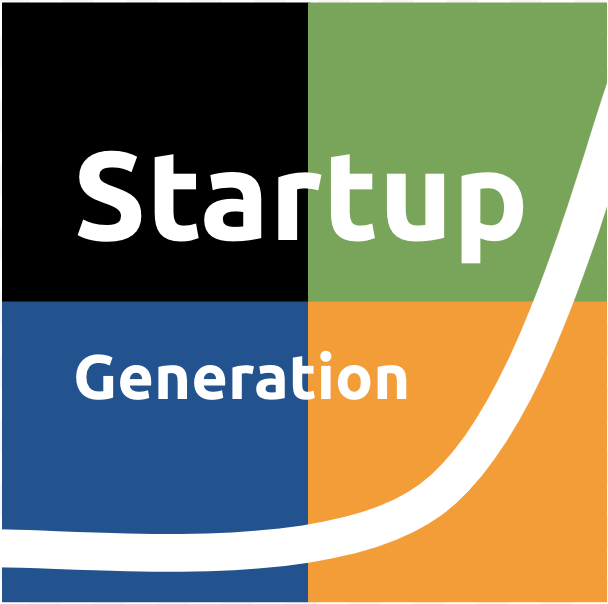
Welcome!
This immersion experience introduces facilitators to first and second semester deliverables in Startup Generation Academy. When working with students, many deliverables are expected to take more than one session to complete. Work is done in teams and teams advance at their own pace. Progress is measured by satisfactory completion of deliverables by semester's end and checkpoints along the way.
Semester One starts by developing networking skills and ideation. It ends with teams presenting their Minimum Viable Product for group evaluation. Semester One Overview (opens in new tab)
|
|
|
Semester Two Overview
The second semester commences with planning MVP tests and concludes with investor pitches. Semester One Overview (opens in new tab)
|
|
|
Immersion Overview
This immersion experience focuses on key deliverables, activities and resources from the full year program. While it doesn't cover all the sessions, it provides facilitators an authentic experience in team entrepreneurship which is fundamental to leading the year-long program.
Day One
- Startup Meetup
X
Questions to ask or answer during today's networking practice

- How could schools better prepare students for work/careers?
- What skills are essential for success in work/careers?
- What do you think are students favorite ways of learning?
- When did you experience a significant learning experience? Where were you?
- What product or service do you wish you had created? Why?
- What's something that could work better than it does? Could it be a new product or service?
- Deliverable 1 Leader's Guide
- BOSI Team Game
X
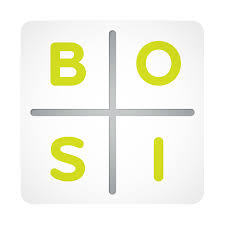 Take the BOSI Survey
Take the BOSI Survey
Builder Profile | You have a drive to build highly scalable businesses very fast. When this DNA is high in an individual... , they break past $5 million in revenue within two to four years and keep going to up to $100 million. That's because these individuals measure success through a very unique lens: infrastructure. It drives the decisions they make and the strategy they build and deploy. They aren't satisfied with a certain amount of personal income or goodwill toward man. They are Pied Piper-like individuals who are master recruiters of talent, investors and customers. Builder DNA activates certain behaviors like a controlling temperament, leading to a Dr. Jekyll and Mr. Hyde like demeanor in the office. Individuals with high Builder DNA tend to struggle most with personal relationships and typically have a revolving door of talent in their companies.
Opportunist Profile | Picture Sir Richard Branson and you have a pretty good idea of what Opportunist DNA is all about. Individuals wired... with this DNA are highly optimistic master promoters. They enjoy marketing and selling. They are wired to sniff out well-timed money making opportunities, jump in at the right time, ride the wave of growth up and (hopefully) jump out at the peak. Opportunist DNA measures success based on the amount of money they make (or will make) when they aren't working. So they are drawn to business opportunities where leverage can be used to create residual and renewal income. This behavioral preset in entrepreneurs makes them impulsive decision makers, especially when it comes to money-making opportunities. This trait can serve them very well or be the source of their demise.
Specialist Profile | This DNA activates in the experts of our world. No sooner does an individual go through years of schooling, apprenticeship or... on-the-job training, does this DNA activate, driving the corresponding behaviors. Specialist DNA drives one to be very analytical, relatively risk-averse and anti-selling. Specialists generate most of their new business from referrals and networking. They measure success based on their personal income. Their businesses tend to grow fairly well in the startup and early growth phase, but as soon as their personal income hits preset targets, their internal thermostat kicks in and they go into customer service mode. Research found that most Specialist-owned businesses plateau in revenues well below $5 million. The ones that get past this level take significantly longer to get there than Builder DNA companies -- often decades.
Innovator Profile | Picture Mark Zuckerberg in the movie The Social Network and you'll see Innovator DNA at work. Like most Innovators, he... was doing something he loved, when a business opportunity popped up. The breakthrough discovery typically drives this entrepreneur in the "lab" of their business -- where they want to invent, design and tinker. They would much rather be in the lab of their business than at the cash register or in the business office. They find operating a business draining. They measure success based on the impact their product or service is having on mankind. "It's not about the money," you'll hear them say. "I'd do this for free for the rest of my life if I could." Individuals with high Innovator DNA control most of the great intellectual property of our time. Unfortunately, they hide in dungeons and find it hard to engage in business discussions.
Source - Founder to Fortune
X
Founder to Fortune
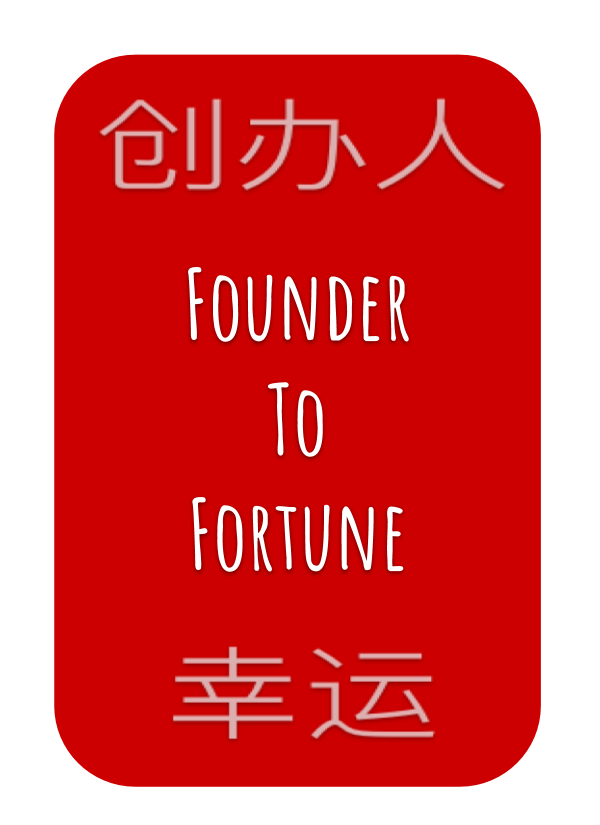
This game helps players experience entrepreneurship from two different perspectives. Founders think of new ideas, pitch them to other people, with the goal of attracting interest. Investors invest in ideas they think will make the most money with reasonable risk.
Game Directions - Lunch
- Visit with a Founder
X
Questions for Founders
- How did you get the idea for your company?
- How did you know the idea was worth pursuing?
- How has your idea changed since you first had it?
- What value propositions do you communicate to your customer segment?
- What is the founder's profile: builder, opportunitist, specialist, innovator (how can you figure out their BOSI identity?)
- What do you wish you knew/could do before starting up?
- Competitors and Customers
X
Market Research
- Conduct initial research on competitors and customer segments: who needs your idea; who wants it; who is already active in this space?
- Compile a list of Competitors and their value propositions
- Condense information on Customers into a succinct description, including population size
- BMC: Business Model Canvas
X
Business Modeling
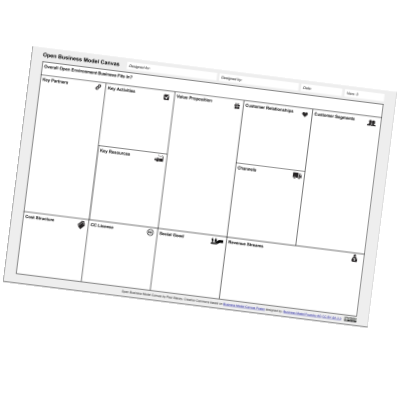
- Completing a BMC is much faster and useful than creating a comprehensive business plan
- There are up to nine sectors to complete in a BMC starting with Value Proposition and Customer Segments
- Use sticky notes to add to your BMC--one idea per sticky note
- Online BMC Template
- Compile a list of Competitors and their value propositions
- Condense information on Customers into a succinct description, including population size
- Facilitation: Hire Power
X
BOSI Hire Power
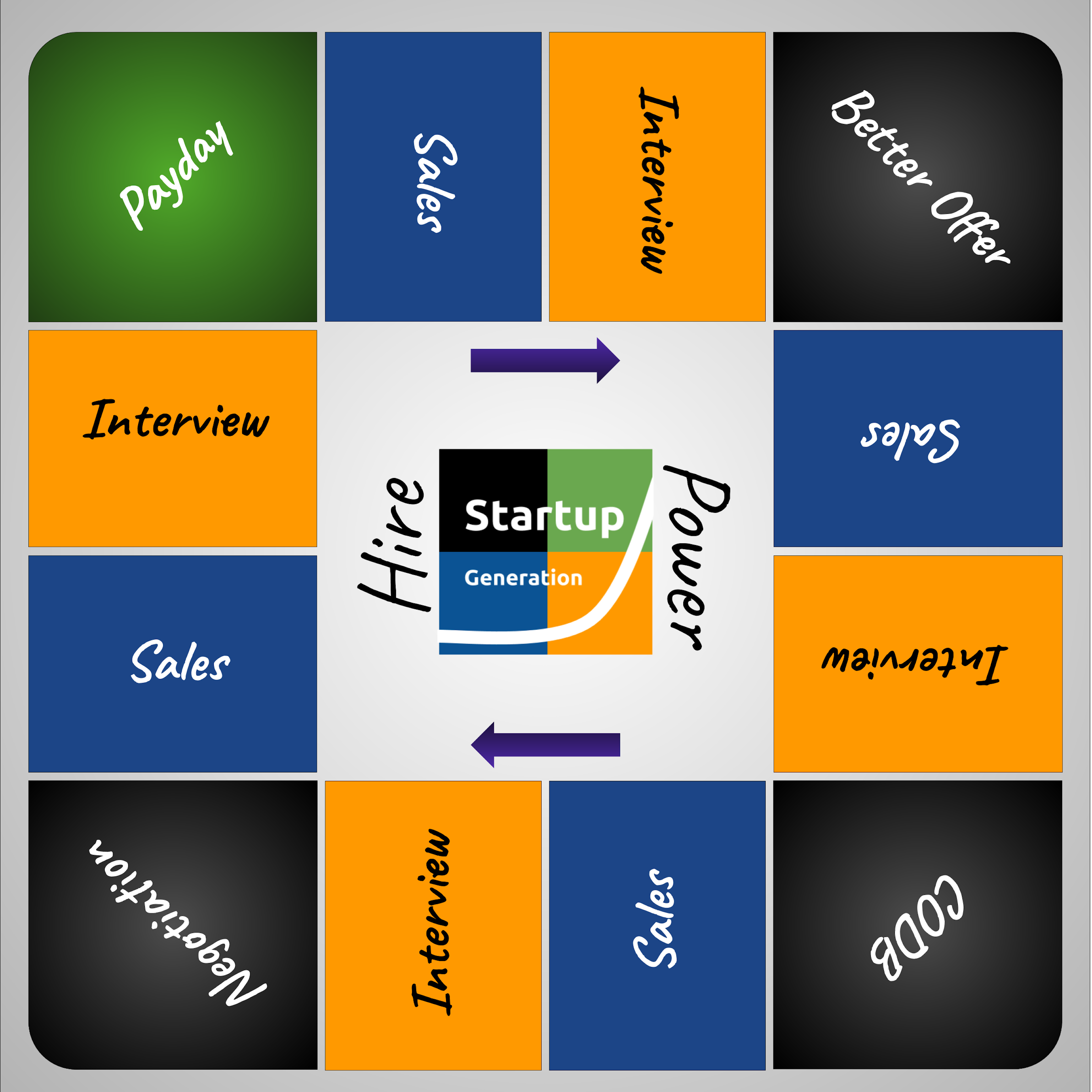
- Play Hire Power to deepen your understanding of BOSI types and interactions on a team
- Two participants facilitate this activity which is found here: Hire Power Leader Instructions
- Session Leader's Guide: BOSI Roles
Day Two
- Warmup game – Don't Touch Me
X
Group Problem Solving
- Stand in a circle
- Identify a partner opposite you in the circle
- When directed, you and your partner touch the target and then switch positions, without touching anyone
- Everyone does this as quickly as possible--the total time elapsed becomes the time to beat
- This game is timed--how fast can you complete the task?

- Game: Sticky Props
X
Value Proposition Game
- Up to six players may play--a team may be a player (this takes longer to play).
- This is a "half-baked" game (on purpose). What is the best way to play it to maximize learning?
- Sticky Props Directions
.png)
Attracting customers involves leveraging “sticky” value propositions. Developing empathy for customers helps identify what they will find "sticky."
- Competitors and Customers
X
Market Research
- Continue to research competitors and customer segments.
- Digital Information Fluency is the ability to locate information efficiently, evaluate it effectively and use it ethically
- Locating information is speculative: you're not sure what keywords will work to retrieve the desired information; you're not sure what database has the information
- Information Fluency Challenges
- Refine your list of Competitors and their value propositions
- Add to your understanding of your Customers.

- Lean Startup Methodology
X
Lean Methodology
- Applied to startup development, lean methods speed up the process from ideation to publication.
- An MVP is not expected to be perfect but a way to elicit useful feedback from a customer segment.
- Feedback used to make informed decisions about the next version of the MVP.
- Create your first MVP
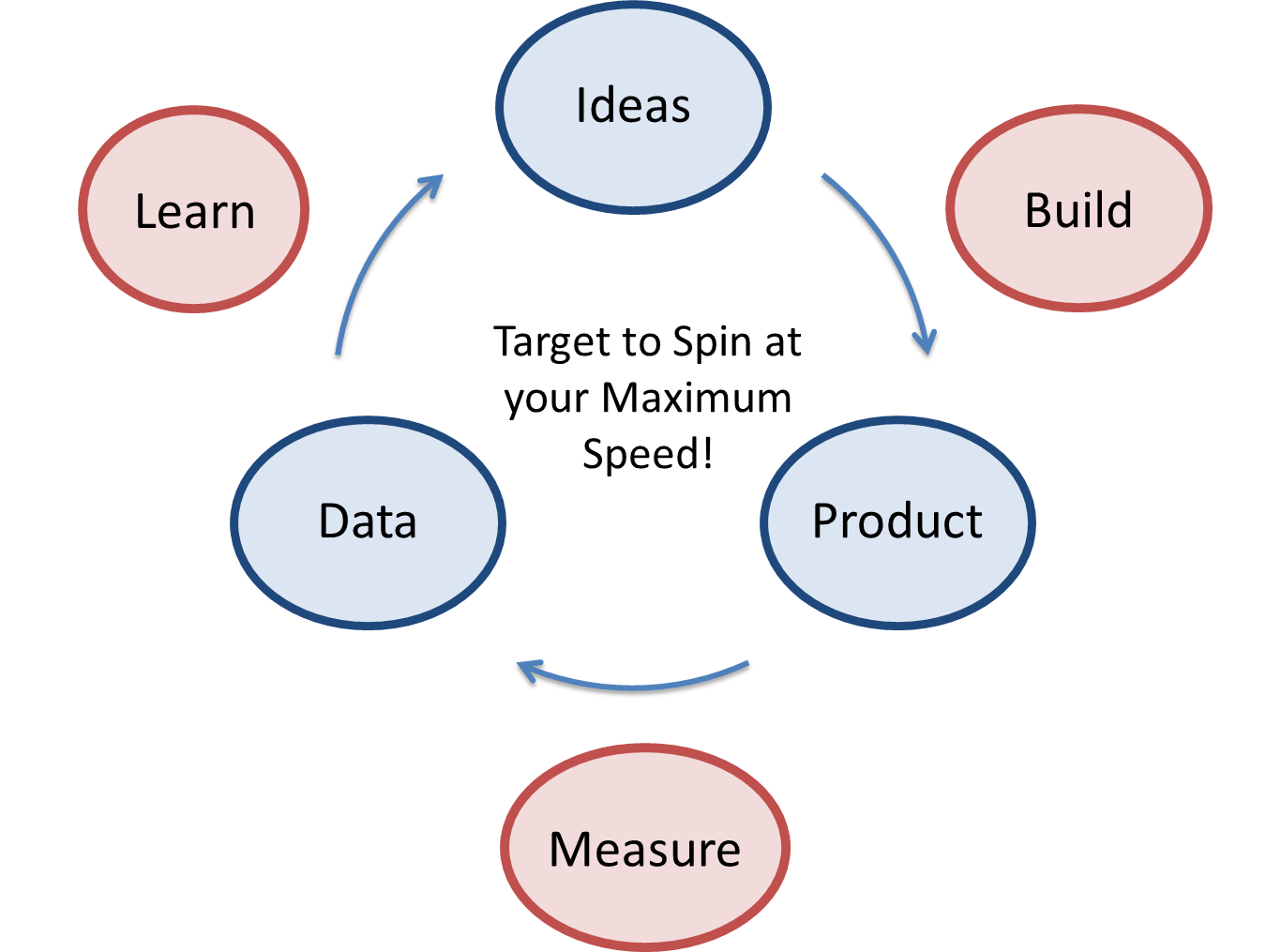
- Lunch
- Obtain Customer feedback on MVP
X
Meauring Customer Responses
- Where can you locate representatives of your customer segment(s)? (in person and/or online)
- What will you ask them to do? (define the tasks they are expected to perform)
- How will you measure and record what they do?

- Improving your MVP
X
MVP Improvements
- What features should you keep and improve?
- What features don't matter or detract from your product, according to end-users?
- Will you stay the course or pivot--on what basis?
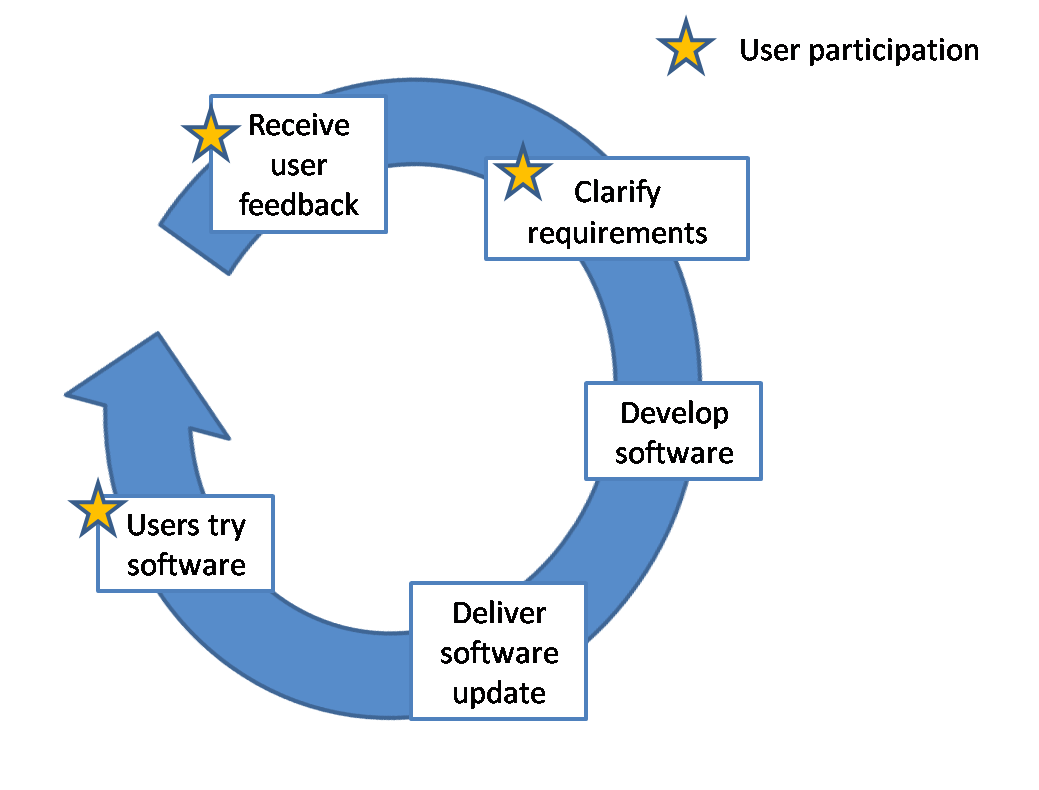
- Facilitation: Kanban Scrum
X
Kanban Scrum

- Play Kanban Scrum to test teamwork and decision-making
- Two participants facilitate this activity which is found here: Kanban Scrum
- Session Leader's Guide: Team Building
Day Three
- Production Ball
X
Playing Production Ball
- Stand in a group facing each other.
- One person passes the ball to another player who passes it to a third player until everyone has passed the ball and it comes back to the first player.
- Time how long it takes to complete this passing eight times. This is how long it takes to produce one product.
- The ball must be passed through the air and cannot touch the ground.
- Repeat the activity to see how fast one product can be produced.
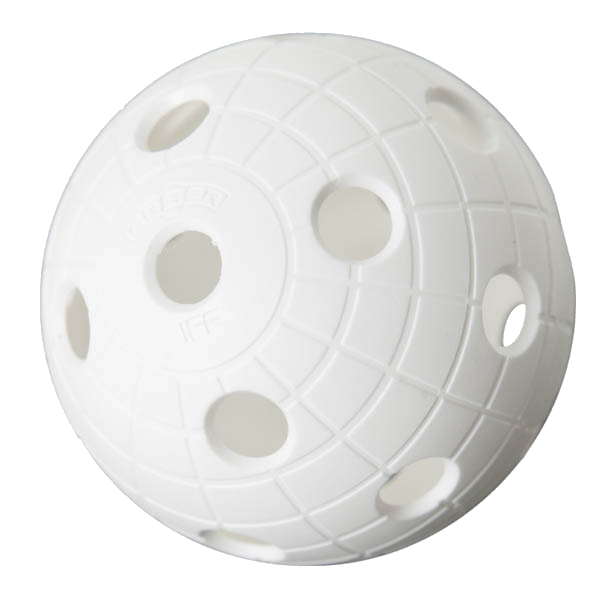
- Incorporation
X
Registering your business
- To open a bank account you need to register your business with state and federal government.
- Business entities to choose from: Limited Liability Corporation (LLC), B-Corp, C-Corp, S-Corp, Non-profit and more.
- Research the type of business you feel is best for your company.
- Decide which state in which to register your company--and why.
- Report your findings and decision to a program leader.

- BMC: Channels
X
Reaching your Customer Segment(s)
- Channels are the ways you use to reach your customers with your message and, eventually, your product.
- Types of channels include: social media, Websites, online and print advertising, posters, word-of-mouth and lots more.
- Develop a message for a channel your customers use that communicates your value propositions.
- Share your media or message with others, asking for feedback.

- BMC: Costs and Revenue Streams
X
Income and Expense Spreadsheet
- Using a spreadsheet, identify and estimate your costs of being in business: team, product development and production, marketing. Add this to your BMC.
- Identify the ways you can generate income. Add these to your BMC.
- Determine if you can do better than breaking even (or worse, losing money). This helps to set the price of your product.
- Estimate how much money you need to launch your business.
- Google Forms Link

- Lunch
- Business Valuation
X
What is your Company worth?
- Your worth depends on the size of your anticipated market, the costs involved in making your product, the price you charge or other revenue streams, the strength of your competition and your value propositions, the effectiveness of your marketing and more.
- Using a spreadsheet, start to fill in your costs and number of products you hope to sell (set a length of time).
- Compute your worth, remaining conservative (reaching less than 1% of the available customers).

- Pitching
X
Raising money by pitching
- Use your BMC as the outline for your pitch: What is the problem you are trying to solve, for whom? How do you make money? How do you get customers?
- Develop an elevator pitch and an investor pitch (the latter includes a presentation deck) you can use to tell others about your idea and move them to action.
- Typical parts of a pitch (put them in the order that makes sense for your product):
- Introduce yourself and your company
- The Ask (isn't always money)
- Pain Point
- Solution Demo
- Customers (who and size)
- Competition
- Value Propositions
- Revenue (projected and actual)
- Sample Student Decks

- Best and Worst Pitch Practices
X
The art of the ask
- View and analyze Shark Tank clips to see what works and doesn't work when pitching to investors.
- Know what your ask is and defend your presentation (includes negotiation and a possible exit strategy).

- Facilitation: Sticky Props
X
Sticky Props

- Play Sticky Props to strengthen understanding and application of value propositions and product-market fit
- Two participants facilitate this activity which is found here: Sticky Props
- Session Leader's Guide: Sticky Props
Day Four
- Active and Problem Based Learning
X
Learning, not Teaching
- Experiences are task-based and student-centered. Minimize the power of the teacher; maximize the power of the participant.
- Guide by asking more than by telling, as much as possible.
- Solve problems with business solutions, not school solutions.
- You will never know it all--rely on your network.

- BMC: Partnerships
X
Helping each other
- Whose help do you need?
- Who needs your help?
- Unless you are help to them they may be a vendor more than a partner.

- Pitch Practice
X
Helping each other
- Finish Pitch Decks
- Practice delivering the pitch at least three times--more is better.
- List likely questions from the investors and develop responses.

- Lunch
- Investor Pitches
X
Helping each other
- Deliver your pitch using a pitch deck
- Know what you are asking to do.
- Field questions from investors; answer what you can--don't make up answers.

- Pitch Feedback
X
Really Listen
- Field questions from investors; answer what you can--don't make up answers.
- Treat this as a Measure-Learn moment from the Lean Startup Cycle.

- Creating and participating in a community of practice
X
Learning Together
- Completing the Immersion Training is not sufficient.
- You don't develop mastery without being a facilitator/coach.
- Facilitators meet asynchronously anytime to post questions, concerns, inspirations, discoveries and answers.
- Facilitators meet synchronously online every two weeks for updates, features, Q & A to support your leadership.

- Facilitation: StartupWars
X
StartupWars

- Play StartupWars to sensitize players to production costs and management decisions in a manufacturing simulation
- Two participants facilitate this activity which is found here: Startup Wars
- Session Leader's Guide: Production Costs